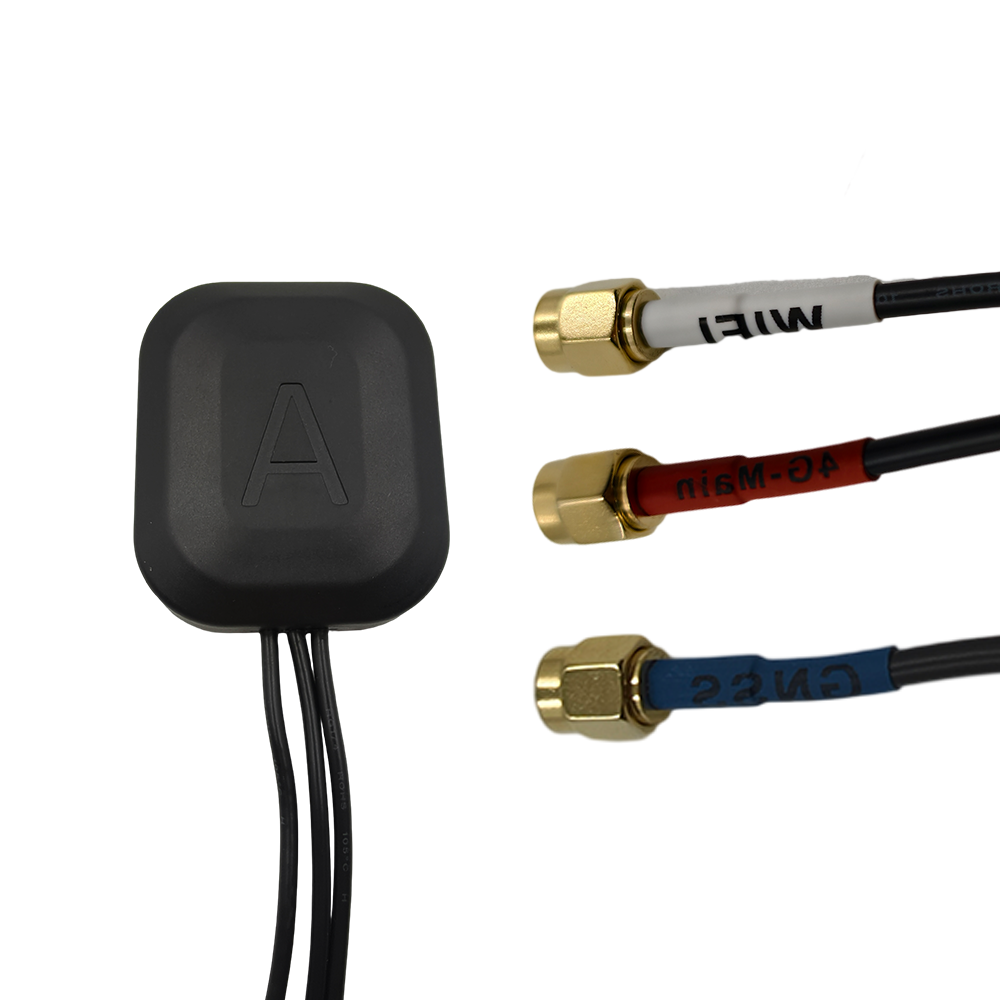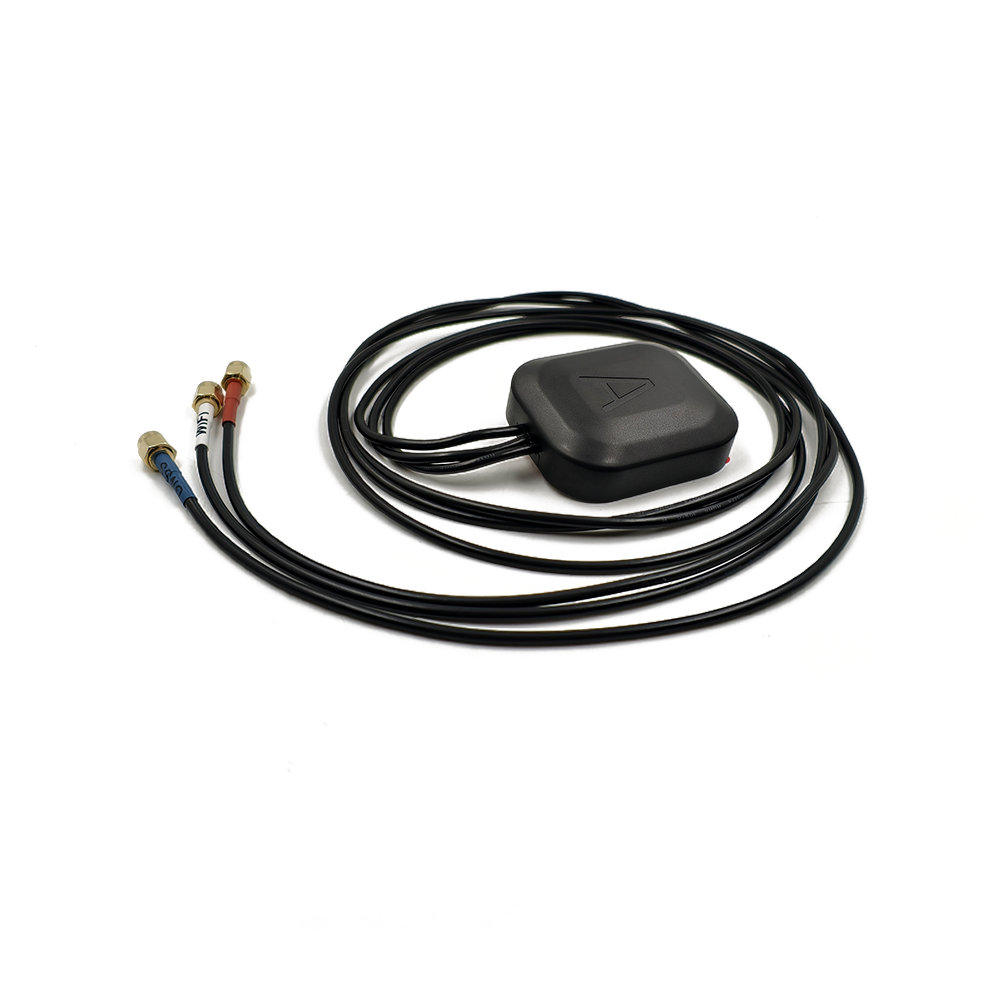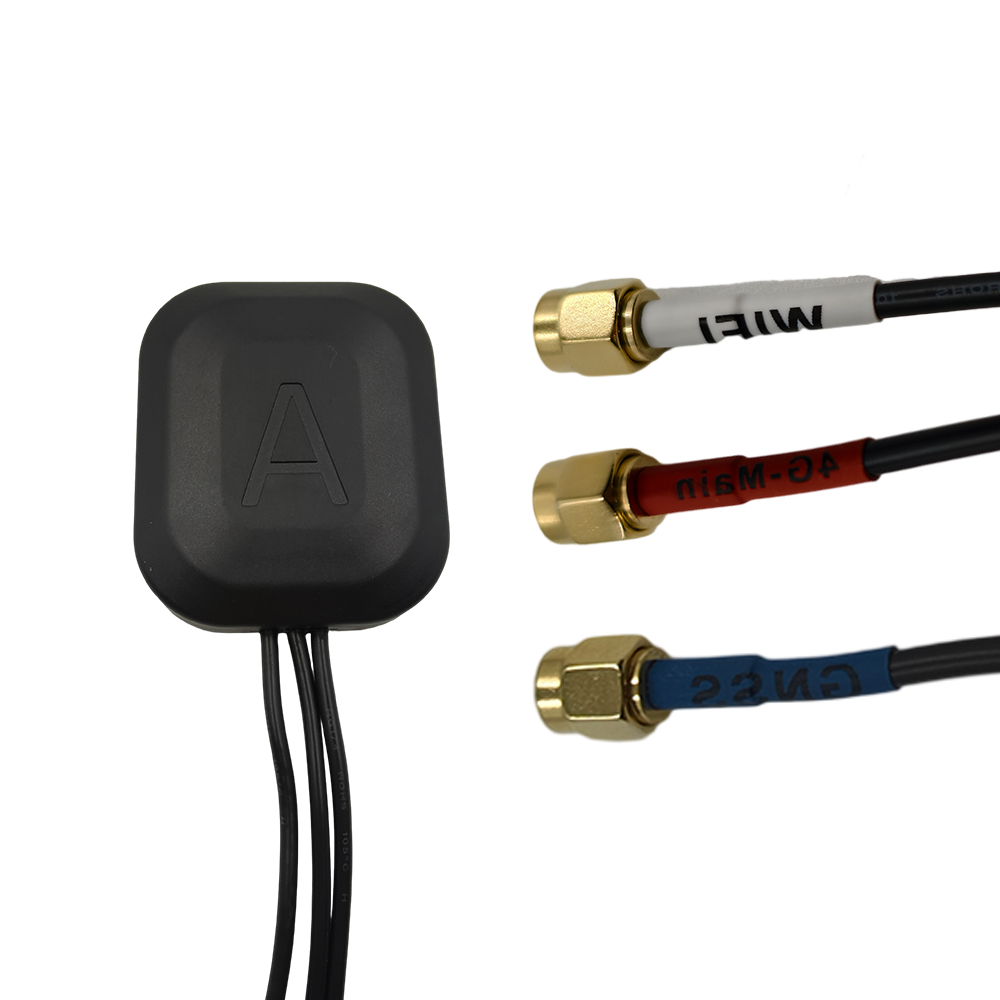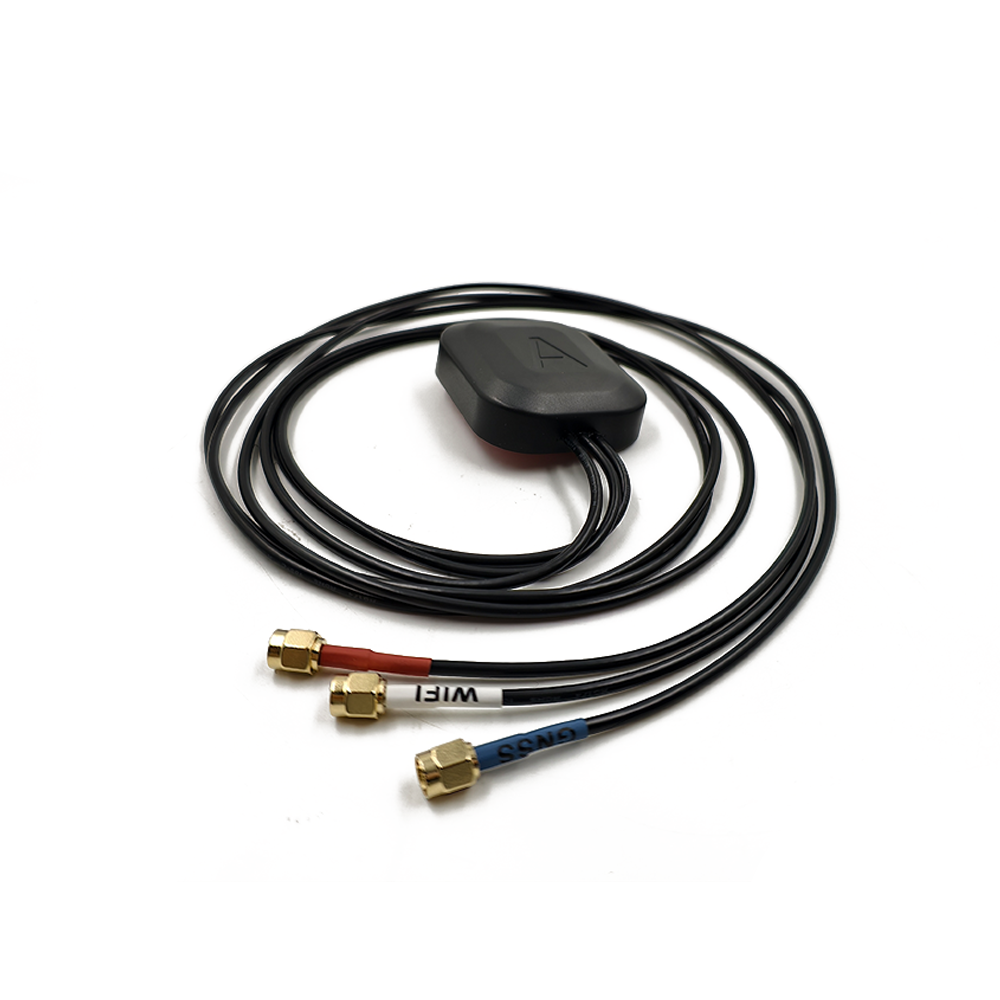5.1 Key Applications
5.1.1 Wearable Navigation and Outdoor Gear
The miniaturization and low power consumption of SMD GPS RTK ceramic patch antennas have revolutionized wearable navigation devices, enabling centimeter-level accuracy in compact, battery-powered form factors. Outdoor enthusiasts—such as hikers, mountaineers, and surveyors—rely on these devices to track their position in remote areas where traditional GPS may be unreliable. For example, a ruggedized hiking watch equipped with a 12×12×3 mm SMD RTK antenna can provide real-time positioning accuracy of ±3 cm, allowing users to follow pre-plotted trails with precision and avoid getting lost in dense forests or mountainous terrain.
In professional outdoor gear, such as tactical navigation devices for military or search-and-rescue teams, SMD GPS RTK antennas offer critical advantages. These devices often need to be lightweight and portable— a tactical watch with an SMD antenna weighs 30-40 grams less than one with an external RTK antenna, reducing fatigue for users who carry equipment for extended periods. Additionally, the low power consumption of SMD antennas extends battery life: a tactical navigation device with an active SMD antenna can operate for 12-14 hours of continuous use, compared to 6-8 hours with an external antenna. This extended runtime is vital in search-and-rescue missions, where devices may need to function for multiple days without recharging.
Another emerging application in wearables is precision sports training. For example, cycling computers with SMD GPS RTK antennas can track a cyclist’s position, speed, and cadence with centimeter-level accuracy, enabling coaches to analyze every turn and pedal stroke. The compact size of the SMD antenna allows the cycling computer to be mounted on the handlebars without adding bulk, while the low power consumption ensures the device lasts through long training rides (4-6 hours of continuous use on a single charge).
5.1.2 Miniaturized Unmanned Aerial Vehicles (UAVs)
Miniaturized UAVs—often referred to as “micro-drones” (weighing less than 250 grams)—rely on SMD GPS RTK ceramic patch antennas to achieve precise navigation and positioning. These UAVs are used in a wide range of applications, including indoor inspection (e.g., checking the structural integrity of industrial pipes), precision agriculture (e.g., mapping small crop plots), and search-and-rescue operations (e.g., locating missing persons in urban rubble).
In indoor inspection, micro-drones equipped with SMD GPS RTK antennas can navigate tight spaces—such as the interior of a power plant boiler—with centimeter-level accuracy. The compact size of the SMD antenna (typically 8×8×1.5 mm) allows the drone to be built with a body size of just 10×10×5 cm, enabling it to fit through small openings. Additionally, the antenna’s hemispherical radiation pattern ensures it can receive satellite signals even in partially covered environments (e.g., near metal pipes), maintaining RTK lock for continuous positioning.
In precision agriculture, micro-drones with SMD GPS RTK antennas are used to collect high-resolution data on crop health. For example, a drone equipped with a multispectral camera and an SMD antenna can map a 1-acre crop plot with 10 cm spatial resolution, identifying areas of stress (e.g., drought or pest infestation) with precision. The low power consumption of the SMD antenna extends the drone’s flight time from 15-20 minutes (with an external antenna) to 25-30 minutes, allowing it to cover larger areas in a single flight.
Search-and-rescue operations benefit from the portability and accuracy of micro-drones with SMD GPS RTK antennas. These drones can be deployed quickly by first responders to search for missing persons in urban or rural areas. The centimeter-level accuracy of the SMD antenna allows the drone to pinpoint the exact location of a person (e.g., under a collapsed building) and transmit coordinates to rescue teams. Additionally, the drone’s small size enables it to fly into areas that are inaccessible to larger UAVs, such as narrow alleyways or forested regions.
5.1.3 IoT Asset Tracking
The growth of the Internet of Things (IoT) has driven demand for high-precision asset tracking, and SMD GPS RTK ceramic patch antennas are enabling this capability in compact, low-cost trackers. These trackers are used to monitor the location of high-value assets—such as shipping containers, construction equipment, and medical supplies—with centimeter-level accuracy, reducing theft and improving supply chain efficiency.
In the shipping industry, IoT trackers with SMD GPS RTK antennas are mounted on shipping containers to track their position throughout the supply chain. The compact size of the SMD antenna (10×10×2 mm) allows the tracker to be integrated into the container’s lock or side panel without adding bulk. The low power consumption of the antenna ensures the tracker can operate for 12-18 months on a single AA battery, eliminating the need for frequent battery replacements. The centimeter-level accuracy of the SMD antenna enables shipping companies to track containers within a port or warehouse with precision, reducing the time spent searching for misplaced assets.
Construction companies use IoT trackers with SMD GPS RTK antennas to monitor the location of heavy equipment—such as excavators, bulldozers, and cranes. The high-precision positioning allows project managers to optimize equipment usage (e.g., ensuring an excavator is used in the correct area of a construction site) and prevent theft. For example, if a crane is moved from its designated location without authorization, the tracker can send an alert to the project manager, who can then take action to recover the equipment. The SMD antenna’s resistance to interference (from construction machinery) ensures the tracker maintains RTK lock even in noisy environments.
Medical supply tracking is another critical application of IoT trackers with SMD GPS RTK antennas. These trackers are used to monitor the location of temperature-sensitive medical supplies—such as vaccines, blood products, and pharmaceuticals—during transportation. The centimeter-level accuracy of the SMD antenna allows healthcare providers to track the exact location of a supply shipment (e.g., within a hospital’s storage facility) and ensure it is delivered to the correct department. Additionally, the tracker can monitor temperature and humidity levels, alerting providers if the supplies are exposed to conditions that could compromise their efficacy.
5.1.4 Precision Robotics and Automation
In the field of robotics and automation, SMD GPS RTK ceramic patch antennas are enabling precise navigation for autonomous robots—such as autonomous guided vehicles (AGVs) in warehouses, surgical robots in hospitals, and agricultural robots in farms. These robots require centimeter-level accuracy to perform their tasks safely and efficiently, and the compact size of SMD antennas makes them ideal for integration into robotic systems.
Warehouse AGVs use SMD GPS RTK antennas to navigate through narrow aisles and transport goods with precision. The centimeter-level accuracy of the antenna allows the AGV to stop at exact locations (e.g., a shelf or loading dock) without human intervention, reducing the risk of collisions and improving productivity. The compact size of the SMD antenna (12×12×3 mm) allows it to be mounted on the AGV’s top panel without interfering with other components (e.g., sensors or cargo). Additionally, the antenna’s low power consumption extends the AGV’s runtime from 8-10 hours (with an external antenna) to 12-14 hours, increasing the number of tasks it can complete in a day.
Surgical robots rely on SMD GPS RTK antennas to achieve precise positioning during minimally invasive surgeries—such as laparoscopic procedures or robotic-assisted joint replacement. The centimeter-level accuracy of the antenna allows the robot to make precise incisions and movements, reducing the risk of complications and improving patient outcomes. The compact size of the SMD antenna enables it to be integrated into the robot’s arm or tool, without adding bulk that could hinder the surgeon’s ability to operate. The antenna’s resistance to interference (from medical equipment, such as MRI machines) ensures it maintains RTK lock during surgery, providing continuous, reliable positioning data.
Agricultural robots—such as autonomous harvesters or weeding robots—use SMD GPS RTK antennas to navigate through fields and perform tasks with precision. For example, a weeding robot with an SMD antenna can identify and remove weeds from a crop plot with centimeter-level accuracy, reducing the need for herbicides and improving crop yields. The low power consumption of the SMD antenna extends the robot’s battery life, allowing it to operate for 8-10 hours in a field without recharging. Additionally, the antenna’s ability to receive signals from multiple satellite constellations (GPS, GLONASS, BeiDou) ensures it maintains RTK lock even in areas with partial signal blockage (e.g., near tall crops).
5.2 Future Trends
5.2.1 Integration with Artificial Intelligence (AI)
The integration of SMD GPS RTK ceramic patch antennas with artificial intelligence (AI) is poised to revolutionize high-precision positioning, enabling adaptive performance and improved accuracy in dynamic environments. AI algorithms can analyze real-time data from the SMD antenna—such as signal strength, noise levels, and satellite visibility—to optimize the antenna’s performance and correct for environmental factors.
One key application of AI integration is adaptive interference rejection. AI algorithms can learn to identify and filter out specific sources of interference (e.g., 5G signals, industrial machinery) by analyzing patterns in the antenna’s received signal. For example, if a 5G tower near a warehouse is causing interference with an AGV’s SMD antenna, the AI algorithm can adjust the antenna’s filter parameters to attenuate the 5G signal while maintaining reception of GPS/RTK signals. This adaptive filtering can reduce interference-related errors by 40-50%, improving the AGV’s positioning accuracy.
AI can also optimize the antenna’s radiation pattern in real time. For example, in an urban environment where satellite signals are blocked by tall buildings, the AI algorithm can analyze the antenna’s received signal strength from different satellites and adjust the radiation pattern to focus on high-quality signals (e.g., from satellites at higher elevations). This adaptive pattern shaping can increase the number of visible satellites by 20-30%, improving RTK lock stability and reducing positioning errors.
Another area of AI integration is predictive maintenance. AI algorithms can monitor the performance of the SMD antenna over time (e.g., changes in gain, noise figure, or resonant frequency) and predict when the antenna is likely to fail. For example, if the antenna’s noise figure increases by 0.5 dB over a month, the AI algorithm can alert the user to replace the antenna before it causes RTK lock loss. This predictive maintenance can reduce downtime for devices—such as IoT asset trackers or UAVs—by 30-40%, improving operational efficiency.
5.2.2 Development of Multi-Band and Multi-Constellation Antennas
As satellite navigation systems continue to evolve—with new constellations (e.g., Galileo, BeiDou) and frequency bands (e.g., GPS L5, Galileo E5b) being deployed—SMD GPS RTK ceramic patch antennas are being designed to support multiple bands and constellations. These multi-band, multi-constellation antennas will provide improved accuracy, availability, and reliability, making them ideal for challenging environments.
Multi-band SMD antennas (supporting 3+ bands, such as L1, L2, L5, and E5a) will enable advanced error correction techniques, such as triple-frequency ionospheric correction. By measuring signal delays across three frequency bands, the receiver can calculate and eliminate ionospheric errors with greater precision than dual-frequency antennas, reducing positioning errors by 10-15% in areas with high solar activity (e.g., near the equator). Additionally, multi-band antennas will be compatible with future satellite systems, ensuring devices remain relevant as new constellations are launched.
Multi-constellation SMD antennas (supporting 4+ constellations, such as GPS, GLONASS, BeiDou, and Galileo) will increase the number of visible satellites, improving positioning availability in challenging environments. For example, in an urban canyon where GPS signals are blocked by tall buildings, a multi-constellation antenna can receive signals from BeiDou or Galileo satellites, maintaining RTK lock. A 2024 study by the European Space Agency (ESA) found that multi-constellation SMD antennas maintained RTK lock 95% of the time in dense urban environments, compared to 75% for single-constellation antennas.
To support multi-band and multi-constellation capabilities, manufacturers are developing advanced SMD antenna designs—such as 3D-printed ceramic patches and metamaterial-based patches. 3D printing allows for the creation of complex, multi-layered ceramic structures that can resonate at multiple frequencies, while metamaterials (artificial materials with unique electromagnetic properties) enable the antenna to receive signals from multiple constellations with high gain. These designs will be more compact than current stacked patch antennas, making them suitable for even smaller devices—such as smart contact lenses or 微型 medical implants.
5.2.3 Enhanced Environmental Durability
Future SMD GPS RTK ceramic patch antennas will be designed to withstand even harsher environmental conditions—such as extreme temperatures, high humidity, and chemical exposure—expanding their use in industrial, automotive, and aerospace applications.
To improve temperature resistance, manufacturers will use advanced ceramic materials—such as silicon carbide (SiC) composites—with stable dielectric properties over a wide temperature range (-80°C to +200°C). SiC has a dielectric constant (εr) of 9-10, which changes by less than 0.1% over the temperature range, ensuring the antenna’s resonant frequency remains stable. These antennas will be ideal for automotive underhood systems (where temperatures reach +150°C) and aerospace applications (where temperatures drop to -60°C at high altitudes).
High humidity and moisture resistance will be achieved through the use of hermetic packaging and conformal coatings. Hermetic packaging—using materials like titanium or ceramic—will seal the antenna from moisture, preventing corrosion of the conductive layers. Conformal coatings—such as diamond-like carbon (DLC)—will provide an additional barrier against moisture and chemicals, with a thickness of just 5-10 μm. These coatings will be resistant to harsh chemicals (e.g., oil, fuel, and agricultural pesticides), making the antennas suitable for use in marine environments (e.g., underwater UAVs) and agricultural applications (e.g., pesticide sprayers).
Shock and vibration resistance will be improved through the use of flexible ceramic materials—such as ceramic-polymer composites—that can absorb impact without cracking. These materials will have a flexural strength of 200-300 MPa (compared to 100-150 MPa for traditional ceramics), making the antennas suitable for use in heavy machinery (e.g., construction equipment) and aerospace applications (e.g., rocket launch vehicles).
5.2.4 Integration with 5G and 6G Networks
The integration of SMD GPS RTK ceramic patch antennas with 5G and future 6G networks will enable faster, more reliable transmission of RTK error correction data, improving positioning accuracy and reducing latency.
5G networks provide high bandwidth (up to 10 Gbps) and low latency (1-5 ms), allowing reference stations to transmit error correction data to rovers in real time. This will reduce the time between error detection and correction from 10-20 ms (with 4G) to 1-5 ms, improving RTK accuracy in dynamic environments—such as high-speed autonomous vehicles or fast-moving UAVs. For example, an autonomous car traveling at 100 km/h (27.8 m/s) will experience a positioning error of just 0.14 m (27.8 m/s × 0.005 s) with 5G, compared to 0.28-0.56 m with 4G.
Future 6G networks will provide even higher bandwidth (up to 100 Gbps) and lower latency (0.1-1 ms), enabling advanced RTK techniques—such as network RTK (NRTK) and precise point positioning (PPP) with real-time corrections. NRTK uses a network of reference stations to provide error correction data over a large area (100-1000 km), eliminating the need for a local reference station. With 6G, NRTK will provide centimeter-level accuracy to rovers anywhere in the network, making it ideal for large-scale applications—such as smart cities or national-scale agricultural mapping.
Integration with 5G/6G will also enable the use of edge computing for RTK processing. Edge computing nodes—located close to the rover—will process the error correction data and satellite signals in real time, reducing the computational load on the rover’s receiver. This will be particularly beneficial for small devices—such as wearables or IoT trackers—with limited processing power, allowing them to achieve centimeter-level accuracy without compromising battery life.
Conclusion
SMD GPS RTK ceramic patch antennas represent a transformative technology in the field of high-precision positioning, bridging the gap between the demand for compact, low-power components and the need for centimeter-level accuracy. Throughout this exploration, we have delved into their design, working principles, advantages, challenges, applications, and future trends, highlighting their critical role in enabling a new generation of devices across industries.
In terms of design and construction, the combination of high-dielectric-constant ceramic materials and SMD packaging has been a game-changer. The ceramic patch—with its precise dimensions and conductive layers—ensures efficient signal reception, while the SMD form factor enables seamless integration




































































 Language
Language
 En
En Cn
Cn Korean
Korean

 Home >
Home > 








 18665803017 (Macro)
18665803017 (Macro)













